Without a doubt, there is no more popular time to visit Provence than when the sun-soaked fields are painted with brushstrokes of purple and green emanating from the massive ocean of lavender that bloom all across the valley. Driving along the hillsides with the windows down, you can smell the fields of lavender even before you can see them with your eyes. And what a sight they are when you finally see them appear. Driving along a Lavender Route in Provence is a spectacular way to see these beautiful fields that stretch out as far as the eye can see. Each one is framed perfectly under the watchful eye of the bright blue sun and the mountains far off in the distance.
Three different regions around Provence are known for their lavender-producing fields. These are the Valensole Plateau, Pays de Sault and the Luberon Valley. I always choose one area to make a day out to discover the magic of the magnificent lavender fields in Provence. Focusing on one specific region allows you to explore it to the fullest. Discover hidden corners and stop to relax and soak in the scenery. So today, let’s dive (or drive) into the fields around the Pays de Sault.
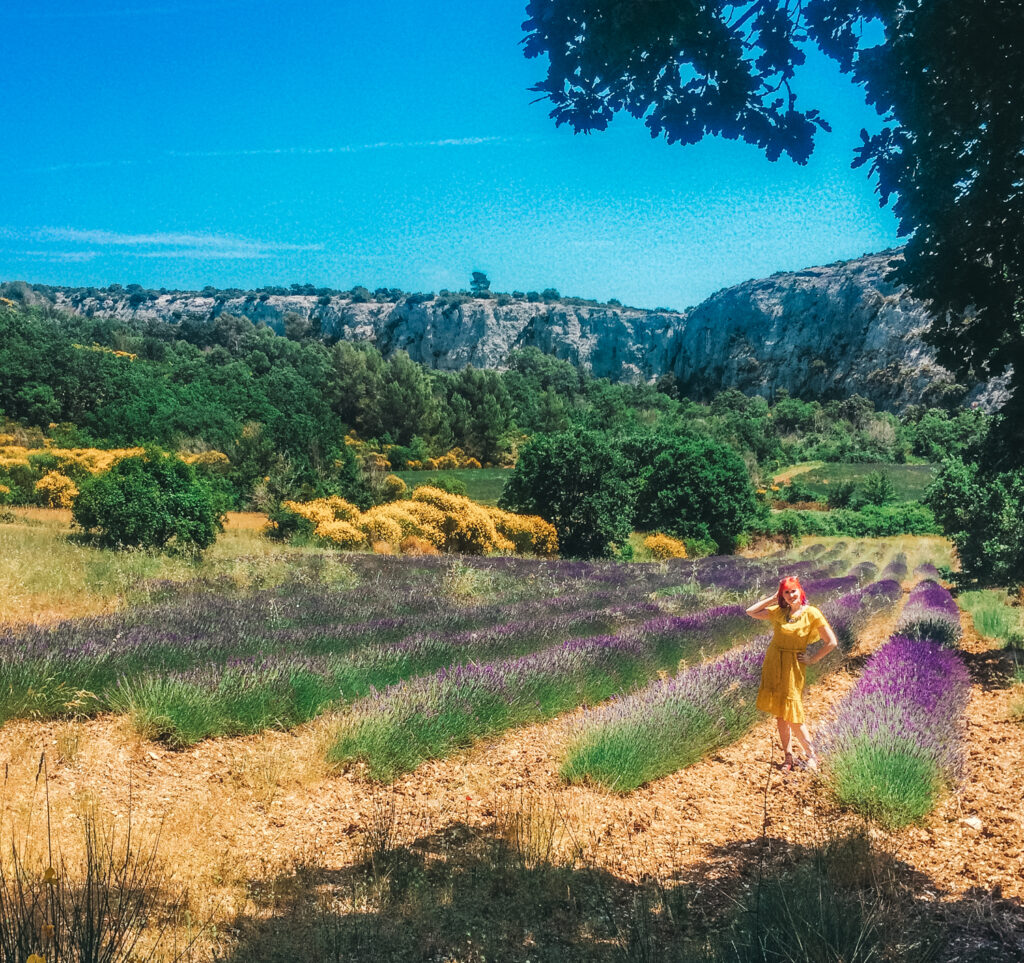
- Pays de Sault Lavender Route Map
- About the Pays de Sault
- The History of Lavender in Provence
- When to see the Lavender Route in Provence
- Tips for Visiting the Provence Lavender Route
- Provencal Lavender Varieties
- Sarraud Lavender Farm
- Route de la Balate
- Les Gorges de la Nesque
- Monieux
- Les Lavandes
- La Bastide des Bourguets
- Sault
- Nougat André Boyer
- La Ferme aux Lavandes
- Le Chemin des Lavandes
- Aurel
- Le Plus Beau Champs de Lavande
- Ferrassières Bories Lavender Fields
- Saint Trinit
- Bistrot de Pays
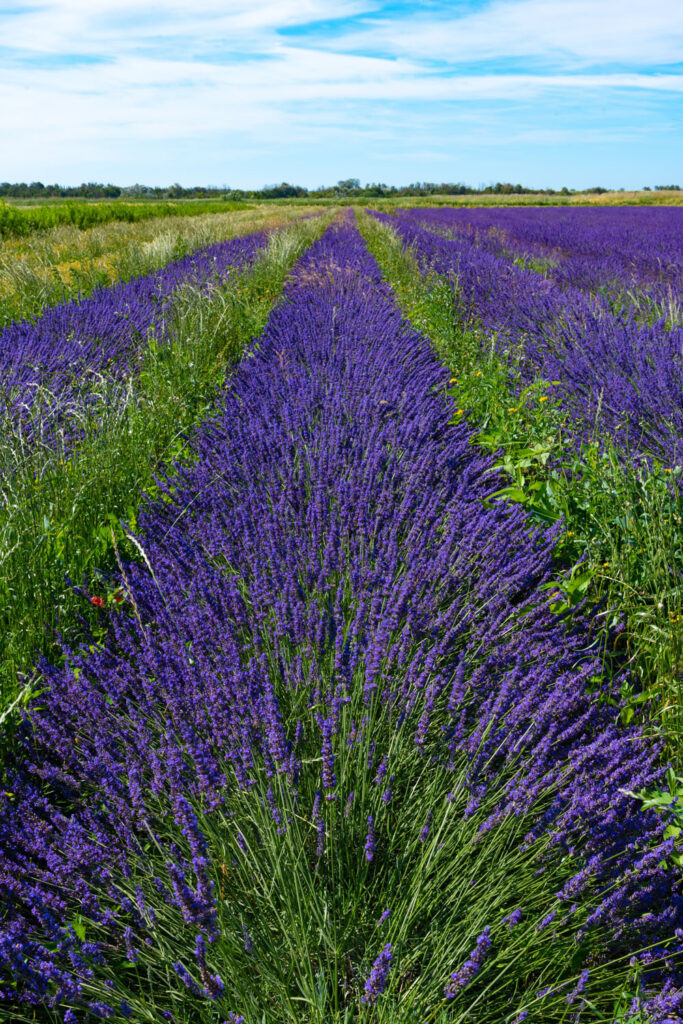
Pays de Sault Lavender Route Map
How Long Does this Route Take?
The Pays de Sault Lavender Route is a day-long self-guided road trip. It leads you north up through the mountains towards the upper peaks of Provence. We will stop at various areas where you can explore lavender fields and visit lavender producers and distilleries. As well as some of the most beautiful Provencal villages. While the actual driving time is only about two hours, there are so many stops along the way that you’ll want to give lots of your time to explore. Remember, the Provencal way of life is all about relaxing and relishing the pleasures of life. So this day trip isn’t about rushing around from place to place. But to explore those hidden corners of this magnificent part of the country.
About the Pays de Sault
The name Sault comes from the Latin word saltus. This word refers to a forest or mountain pasture filled with dales, ravines, and meadows. And you will definitely find this describes the Pays de Sault perfectly! A picturesque and almost mythical place. Like something out of a fairytale.
The Pays de Sault is found deep in the heart of the Pyrenees mountains. It is located at an altitude of 700-1,000 meters and as such, has a much more temperate climate during the summers. Throughout the year, the Pays de Sault is also sheltered from the forceful mistrals (strong northerly winds) that rush through the rest of Provence. These features make the landscape unique compared to other areas of Provence. The countryside is cut by deep gorges, and driving through it all allows you to gaze upon this varied and vast terrain.
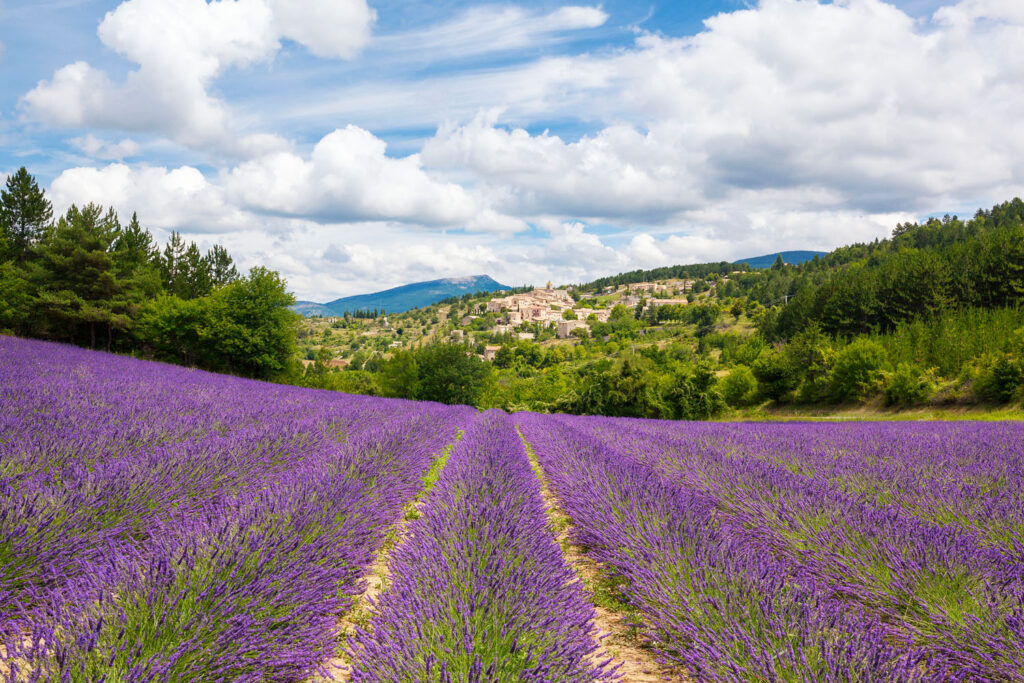
The History of Lavender in Provence
“Lavender” comes from the Latin “lavare,” meaning washing. Since ancient Antiquity, the Romans knew how powerful the lavender plant was. They used it for its medicinal properties and aromatic qualities, and especially for washing. But Lavender is not native to Provence. It was brought to the countryside by the Romans. The Romans knew that Provence’s dry, sunny climate and well-drained soils would be ideal for lavender growth. In the Middle Ages, lavender cultivation in Provence was primarily undertaken by monastic communities. Monks recognized the value of lavender for its therapeutic uses and began growing it in monastery gardens.
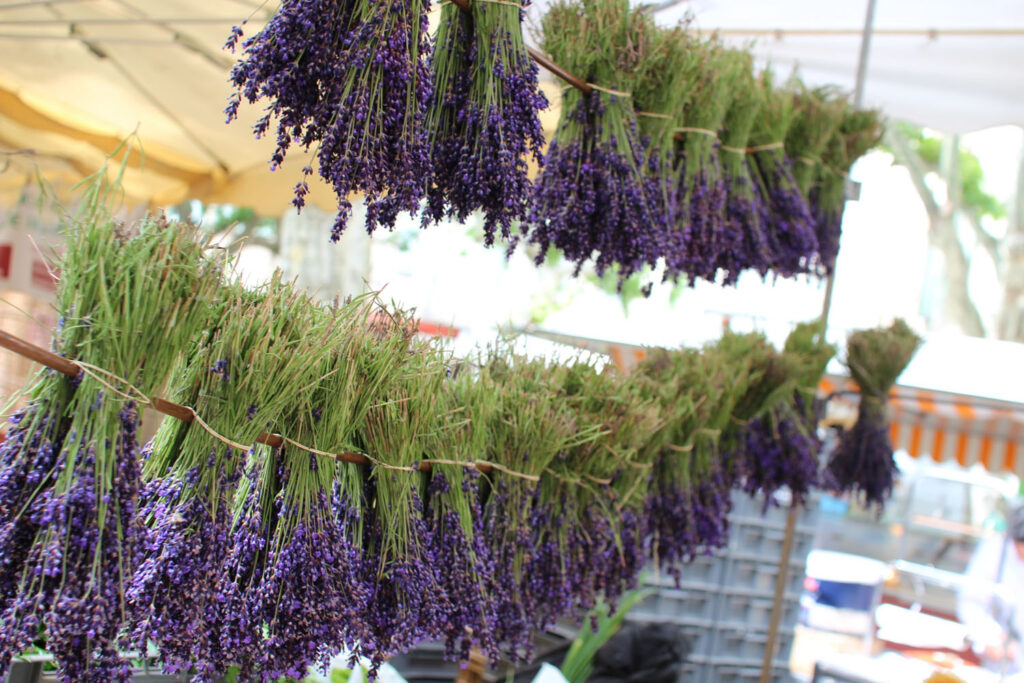
Over time, the cultivation of lavender expanded beyond monasteries. Farmers and locals started cultivating lavender on a larger scale. In the 19th century, the demand for lavender products, such as essential oil, perfume, and soaps, increased domestically and internationally. And lavender became one of the most important agricultural exports for the region. Distillation techniques improved, allowing for efficient processing of lavender crops. Today, lavender fields in Provence are an iconic symbol of the region, attracting tourists from all over the world.

When to see the Lavender Route in Provence
The Lavender in the Pays de Sault is the last to bloom during the summer lavender season. This is due to its high elevation. Generally, you can expect the lavender to begin to bloom in late July into August. But thanks to the Sault Lavender Festival, which takes place on August 15th, the stalks of lavender are never cut down before this date. A big part of the festival is the harvest competition. Locals compete against each other to collect the lavender using the original method of harvesting, which employs a sickle to cut down the stalks.
The exact timing of the lavender bloom can vary slightly from year to year. Depending on weather conditions and other factors. It is always a good idea to check with local sources, such as local lavender farms or tourist information centers in the area, for the most up-to-date information on the lavender bloom in the Pays de Sault.
If you book your trip well in advance and the weather isn’t behaving, and you arrive too early to see the blooms in the Pays de Sault, you can always visit some of the fields in the lower part of Provence like in the Valensole Plateau or the Luberon Valley where the fields start to bloom in late June and July.
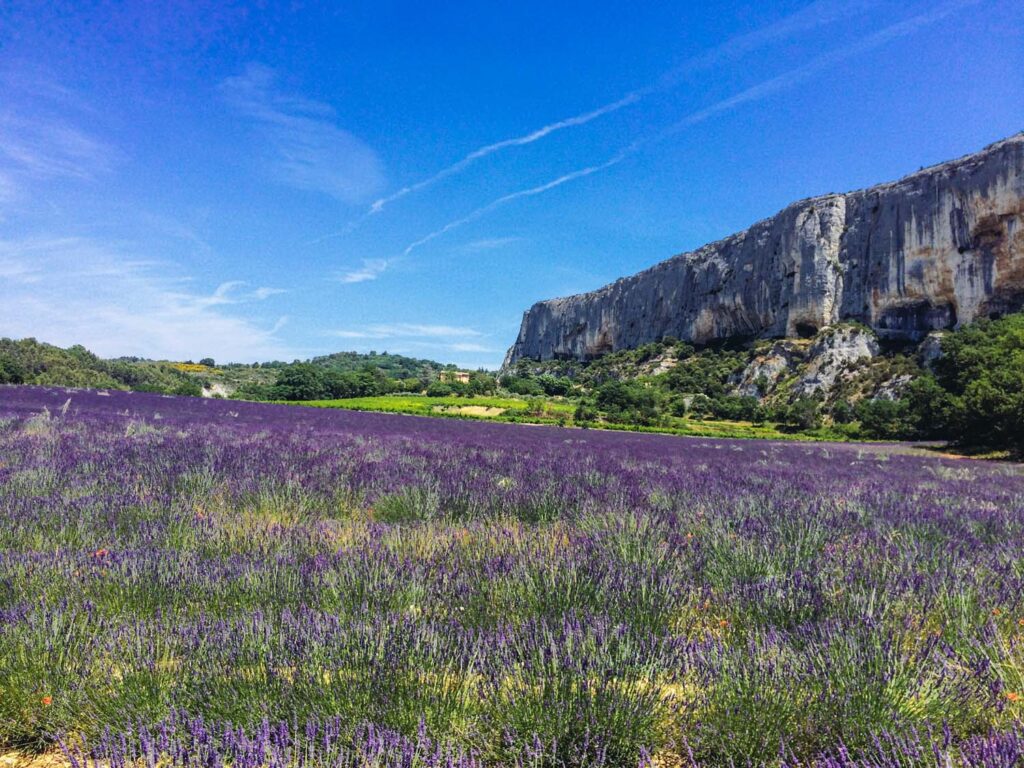
Tips for Visiting the Provence Lavender Route
Field Etiquette
Before entering lavender fields, remember to respect the farmers’ hard work and follow any posted guidelines. If there are any roped-off areas, avoid entering. They are there for a reason. But with so many different fields to visit, you will always find somewhere you can walk right into the fields to get those sprawling views. Remember to avoid stepping on the plants at all costs. This is how these farmers make a living, and you would hate to be responsible for damaging their crops.

Always be sure to walk only down the rows of lavender and not over them. And never pick the flowers. There are so many places around Provence to buy very inexpensive stalks of lavender; there is no need to pick them yourself in case you damage the plant by doing so. Plus, stalks of lavender must be dried to be preserved, so best to buy them after they have been left to dry.
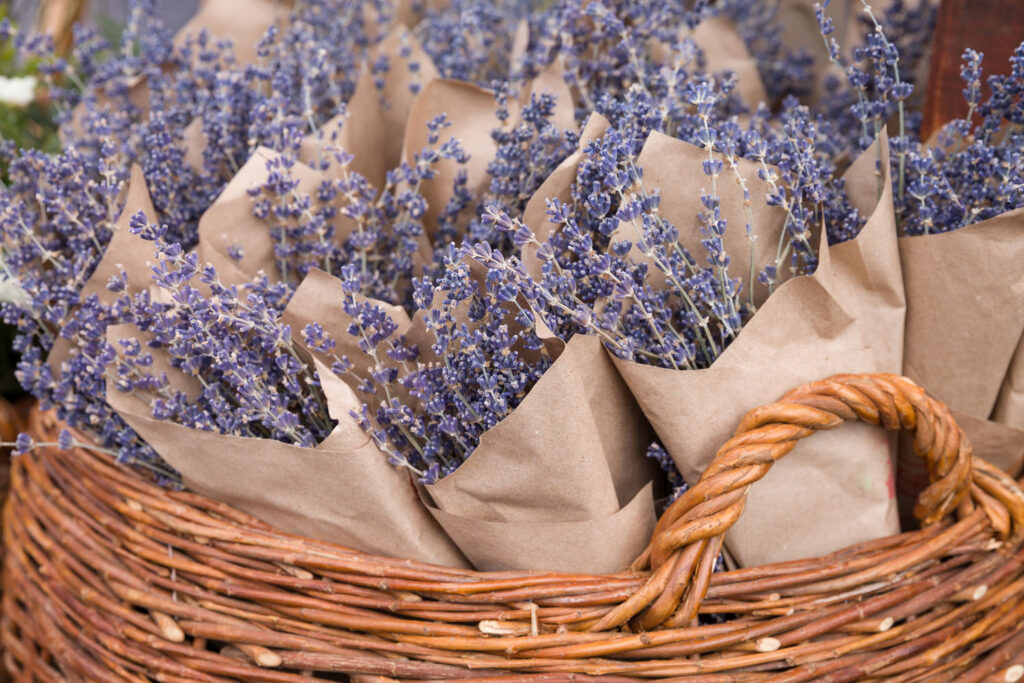
What to Wear & What to Bring
During the summer, when the lavender blooms in Provence, it can be impossibly hot. So be sure to wear plenty of sunscreens and always bring a large, wide-brimmed hat to ensure you aren’t directly exposed to the sun. Especially in the fields, there is no shade to escape under, so you will always be in direct sunlight. As you walk around in the lavender fields, wear some sensible shoes. Sneakers or comfortable sandals are the best options for footwear.
Bring a nice, thick picnic blanket with you if you want to have a little picnic along the way. Most fields don’t have super soft ground, so having a good, thick base to sit on is a great idea to ensure you’re comfortable. Also, bring everything you’ll need for the picnic, from food and drinks to cutlery and napkins. And always make sure to leave your picnic spot exactly how you found it and bring all your garbage home with you. Be sure you bring plenty of water, more than you’ll think you need, for long days out in the sun.
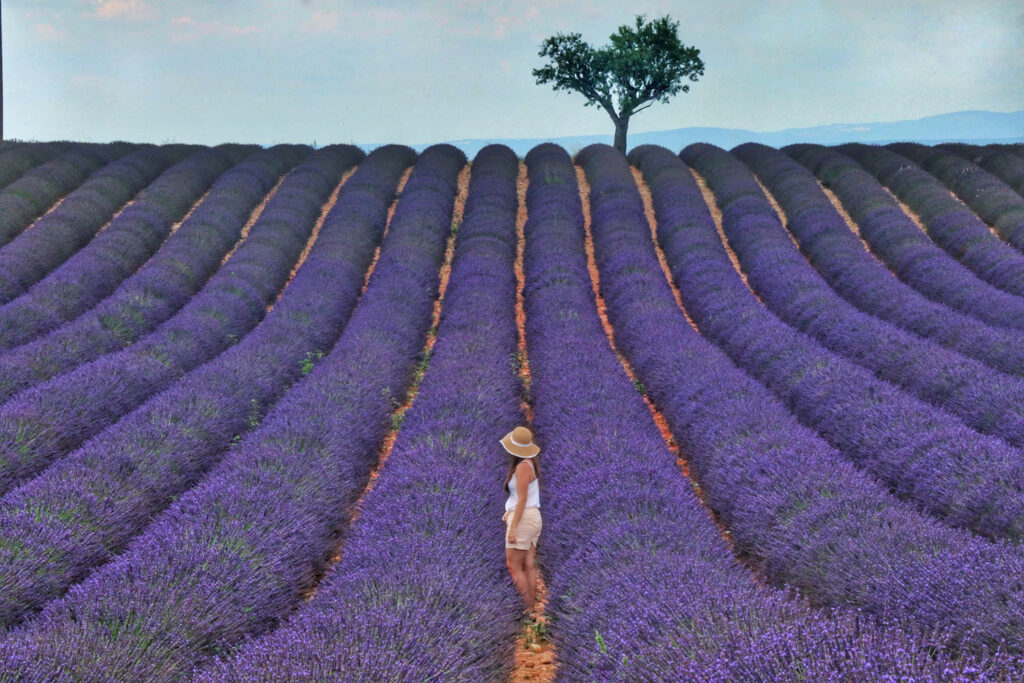
Renting a Car
To make the most of this photographic region of Provence, you’ll want to rent a car to get around. It’s advisable to book your rental car in advance, especially during peak travel seasons. When picking a rental car for your travels in Provence, I always air on the smaller side. Smaller cars are ideal for navigating narrow village streets. And some roads in Provence you might think are one lane only, but before you know it, you’ll discover they aren’t. And the smaller your car, the easier it is to scoot by. Just be sure to pack lightly to ensure you can fit all your luggage into the car.
Rules of the Road
Be sure to familiarize yourself with France’s road rules and driving customs. In France, you drive on the right side of the road. And remember that priority is given to vehicles coming from the right at intersections without traffic lights or signs. The roads in Provence have very strict speed limits. And there are hidden speed cameras even in small villages and dirty roads. And these speed cameras will fine you for going even 10km over the limit! These fines will be mailed to you back home, so there is so escaping them after your trip. So you should always keep an eye on these speed limits. Some cars come with a GPS system that will alert you to the change in speed limits. Or use Waze to help you get an alert when a speed camera is in effect.

Parking
Before stopping your car to get out and explore the fields, you’ll want to do so safely. You don’t want to stop your car in the middle of the road and block oncoming traffic. Trust me; there are many places to stop, so if you think you’re missing an opportunity, another will come any minute. Many lavender fields have come to expect tourists these days. And there will often be a patch of dirt where you can park your car, off to the side of the road, near the fields. Never ever park or drive your car right into the lavender plants field.
Lots of the lavender producers and shops have parking lots out front. You can explore the shops and then head back to see the fields beyond. When in villages, there are both free and paid parking options. Pay attention to parking signs to avoid any fines or penalties.
Photography Tips
You have to expect to see a lot of people during the summer months. But arriving early in the morning or right at sunset will ensure you get as much of the field to yourself as possible. And remember, if you just turn your camera this way or that, it’s easy enough to get a shot without other people in it. Be kind to those around you; everyone is there for the same reason.
Going By Guided Tour
While renting a car and going at your own pace is always my recommendation, if you don’t want to drive yourself and instead just want to relax and be led by a guide, you have plenty of options. These guided tours stop off at producers and fields and combine your day trip with a visit to a famous neighbouring village.
Provencal Lavender Varieties
When it comes to lavender, there are over 30 different species. But the two most popular you’ll find in Provence are Fine Lavender and Lavandine. While they both belong to the Lavandula genus, there are distinct differences in the characteristics, aroma, and cultivation of each plant.
Fine lavender (or Lavandula angustifolia) typically grows in compact, bushy formations, reaching around two-three feet. It showcases slender, linear leaves with a gray-green hue. Its slender and elongated flowers form tight spikes at the top of the stems. The blossoms display a lovely lavender-purple colour. This flower offers a delicate, sweet, and floral fragrance. Its scent is often soothing, calming, and reminiscent of the quintessential lavender aroma.
Lavandine (or Lavandula x intermedia) is a much larger plant, often growing up to three-four feet tall. Its flowers are shorter and fuller than Fine Lavender, forming dense and rounded flower spikes. The colour of the blossoms can range from lavender-purple to bluish-purple. Lavandine exhibits a more intense fragrance compared to Fine Lavender. Its scent carries a sharper, medicinal note with hints of camphor (woody scent), making it suitable for various aromatherapy applications. Lavandine also typically blooms a bit later than Fine Lavender.
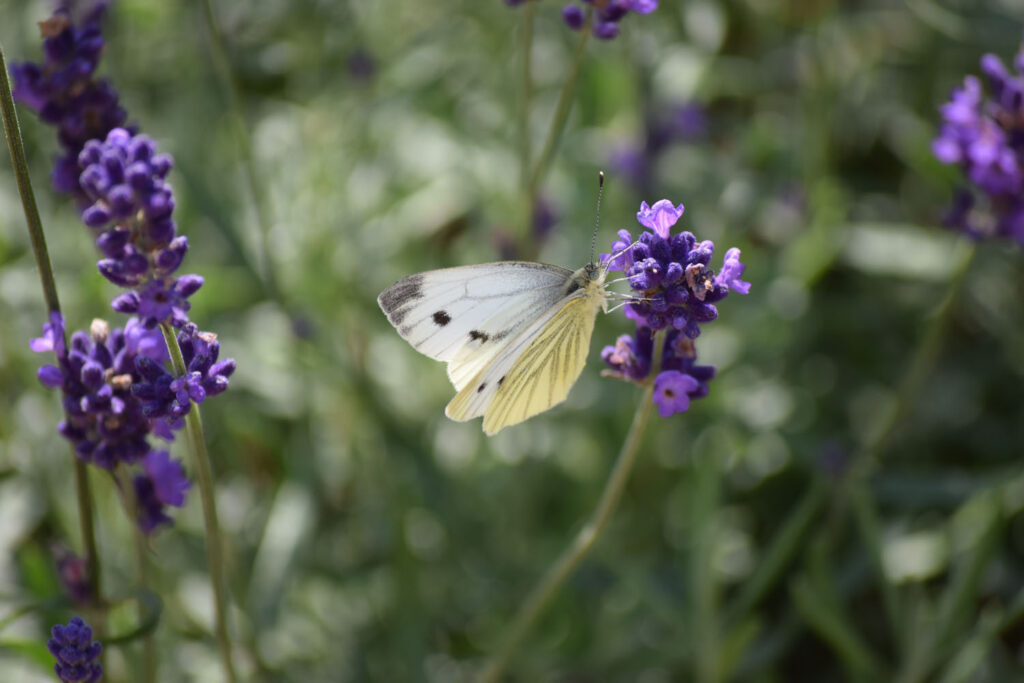
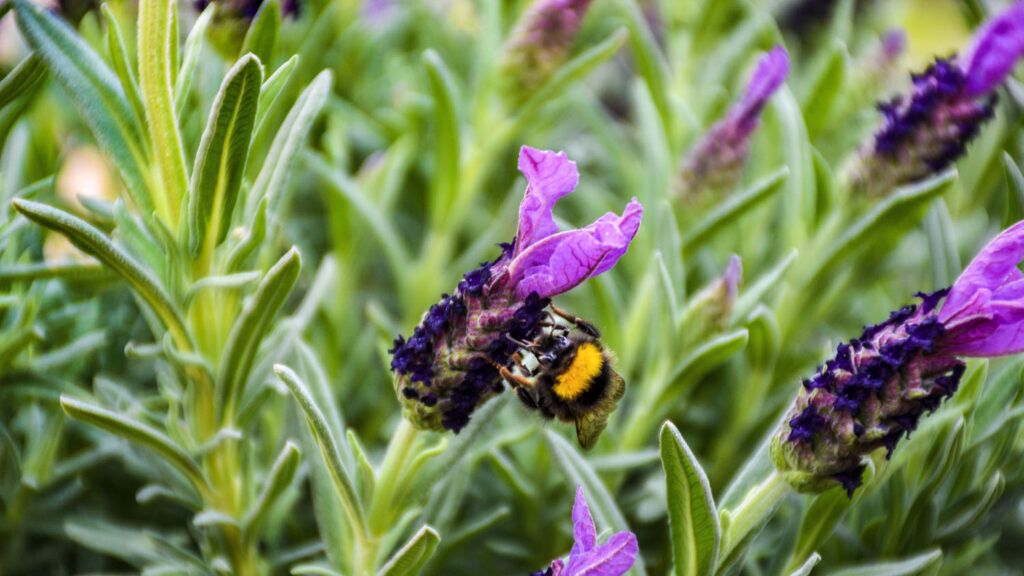
Sarraud Lavender Farm
We begin our adventure in the Pays to Sault at the edge of the Pyrenees at the Sarraud Lavender Farm. Visiting a lavender farm is an excellent opportunity to learn more about the history of lavender farming and how the flowers are harvested. You can also see how the oils gathered from the flowers and transformed into various cosmetic products.
The Sarraud family settled in the Pays de Sault in 1887 and began cultivating their fine lavender fields. Six generations later, they are still working in the same fields, albeit with a few new modern technqiues. But with much a lavender production, the old ways are still some of the best ways. In fact, their hand-tied dried lavender bouquets are still cut by hand in their fields.
In addition to lavender cosmetics, the farm produces its own lavender honey. One of the most uniquely Provencal elements of French gastronomy. The honey is sweet but with a subtle floral note that heightens everything it is paired with! I always make sure to pick up a few bottles when I’m in Provence. And there is no better place to get it from than directly from the farmers themselves.
Route de la Balate
From the Sarraud Lavender Farm, we get onto the D230, heading northeast. Continue along the road for 12 minutes until you reach the Route de la Balate, just across D943. You’ll know you’ve entered the right road when you spot the tiny old stone church on the corner. The Route de la Balate stretches northwards for about 5 km towards Monieux. And while the peaceful drive through the mountain range is a gorgeous sight, the best part is the beginning. For the first few minutes, you are met by immense lavender fields stretching as far as the eye can see. On either side of the road, you’ll be able to gaze out at these blooming landscapes, and if this is your first time seeing lavender in Provence, be prepared for it to take your breath away.
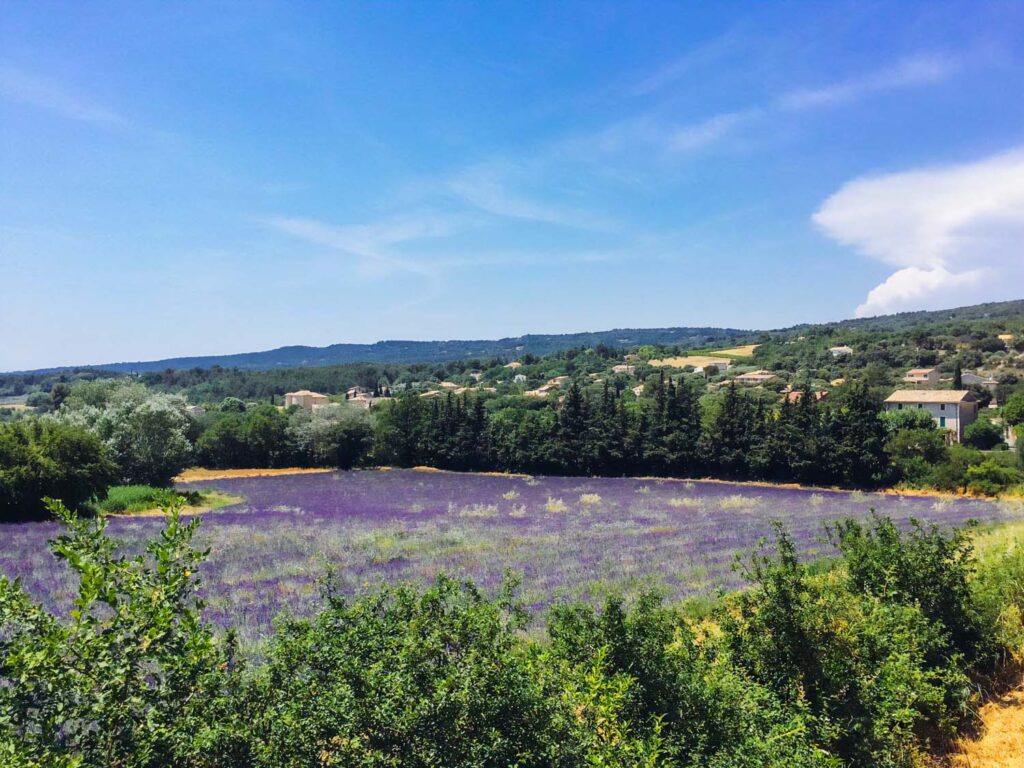
Les Gorges de la Nesque
When you reach the town of Monieux, we will make a quick detour past it to return here shortly. Only a short 10 minutes west along the D942, you will cruise along one of the most picturesque roadways in Provence. The narrow road seems to cling to the cliff’s edge, revealing stunning vistas at every turn. This is the road that leads around the great Gorges de la Nesque.
Marked on the map is a small spot to park and walk out onto an observation deck. Thankfully there are some iron fences separating you from the perilous drop into the gorge below. But there is nothing like these views! You can marvel at the dramatic limestone cliffs flanking the winding road from this spot. See if you can gaze straight down into the verdant valley to spot the meandering Nesque River below.
Monieux
Turn back to head back into the city of Monieux. Monieux is one of the six villages that make up the province of the Pays de Sault. Monieux is a tiny village with little more than a few streets almost carved into the hillside. There are still some vestiges of the old 12th-century medieval tower still clinging to the rocks. And you can step into the Saint Pierre chapel built in 1623. Little has changed within and it truly feels like you’ve gone back in time.
Les Lavandes
But what brings most people to Monieux is Les Lavandes restaurant. If you plan on coming, do your best to book a reservation in advance. The small restaurant is a favourite with locals who flock here for its three-course lunch menu. The food here is an array of the best local Provencal produce. This means you’ll see everything from that classic lavender honey to truffles, lamb, mushrooms and most importantly, petit épeautre. Petit épeautre is an ancient grain local only to this one region of Provence, and if you come here, you have to try it.
The restaurant is open every day except Sunday evening and Monday all day. To make reservations, you must phone in advance. If you’re uncomfortable speaking French, you can ask your hotel concierge or rental home host to see if they can do it for you. Since the restaurant is so tiny, making the reservations is a good way to ensure you don’t come all this way only to be disappointed to find it’s all booked up.
La Bastide des Bourguets
After a delicious and filling lunch, time to jump back in the car. Just five minutes east along the D942, you will find the La Bastide des Bourguets hotel. We might not be staying here today, but this hotel is in the center of the most incredible lavender fields! And their long entry laneway makes for a great and easy place to stop to get some iconic photos.
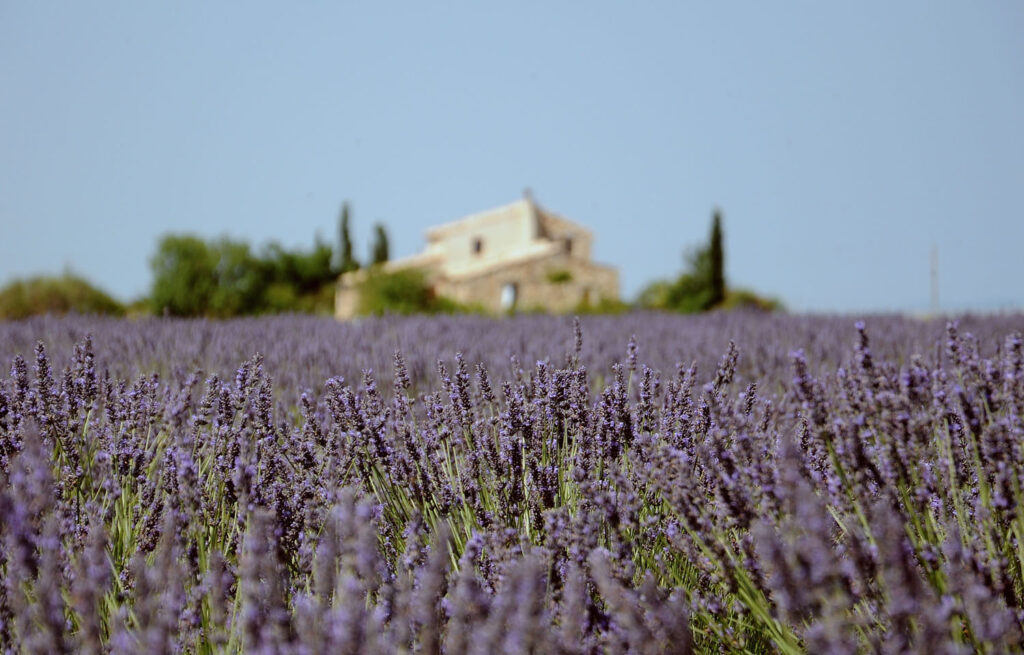
Sault
Continue east along the D942 for another few minutes, passing dozens upon dozens of lavender fields as you go. Even on a hot day, put down the window to allow that aroma of lavender, hot in the air, to rush past you as you go. Soon you will arrive in the small town of Sault, which bares the same name as the region itself. And as such is the defacto capital of the region.
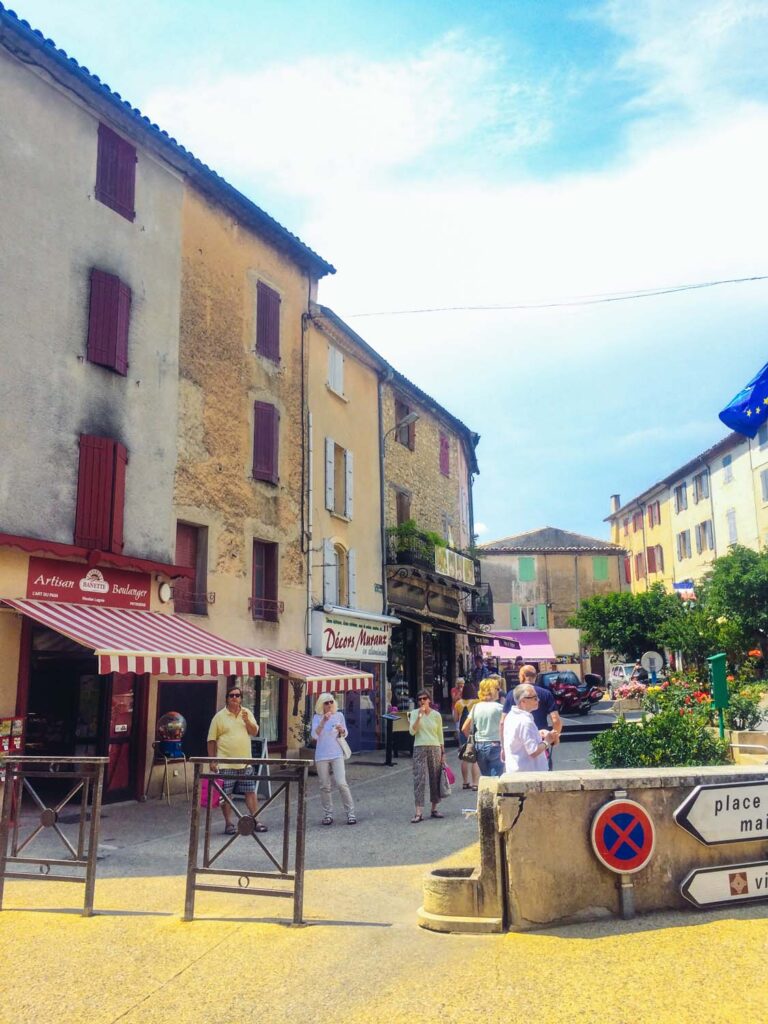
Sault is truly one of my favourite little towns in Provence, despite its small size. The first time I stepped into the streets, I was just enraptured. The vibrant shutters, the quaint atmosphere and, of course, the panoramic views of the surrounding lavender fields with Mont Ventoux in the background.
The town center features well-preserved medieval buildings, a charming tree-covered town square, and an inviting series of brightly coloured cafés and shops. While in town, it’s worth popping your head into the 12th-century Romanesque church of Notre-Dame-de-la-Tour. If only for a refreshingly cool break from the hot summer heat. This stone landmark is a vestige of Sault’s medieval past and the showcase of the little village.
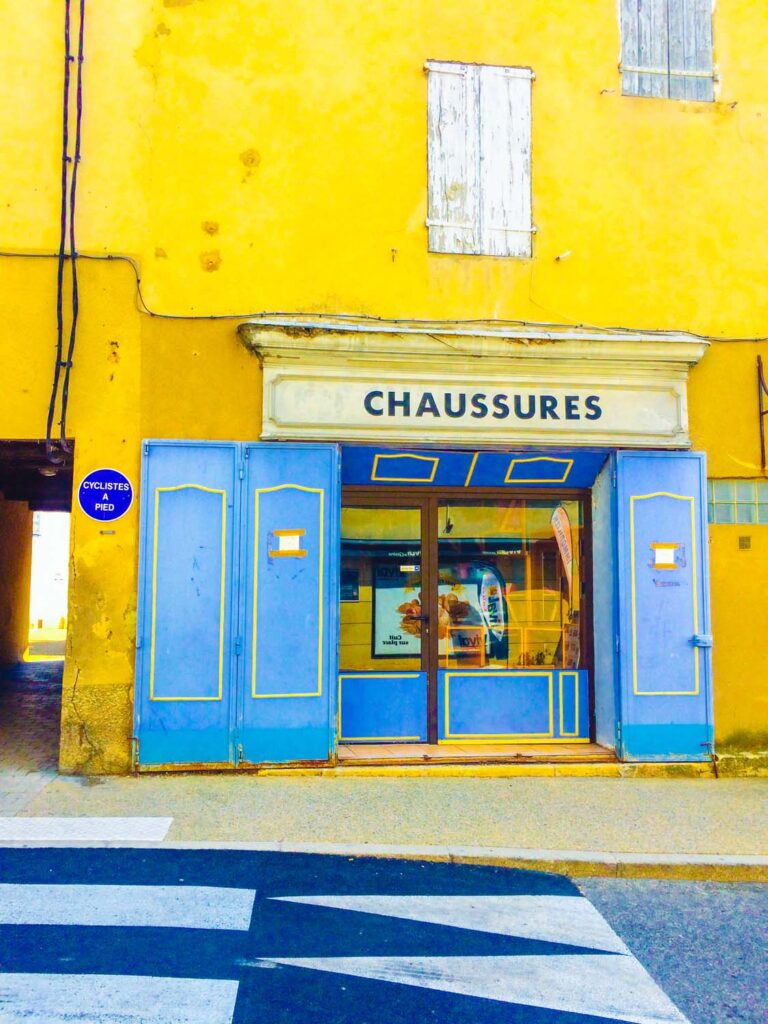
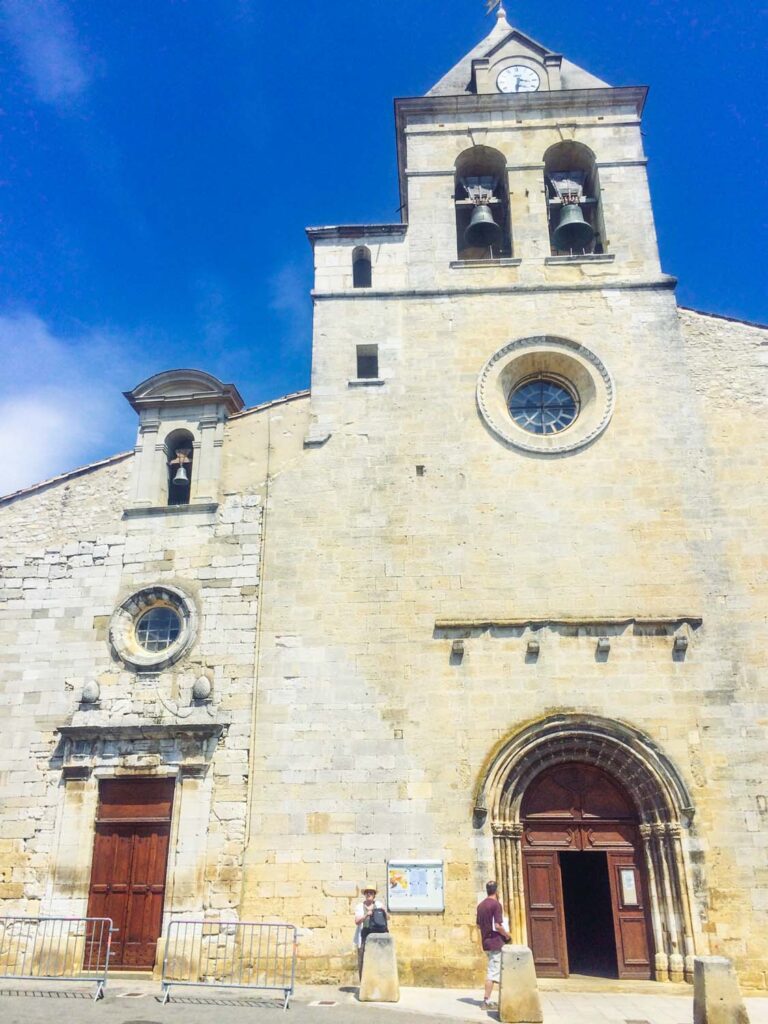
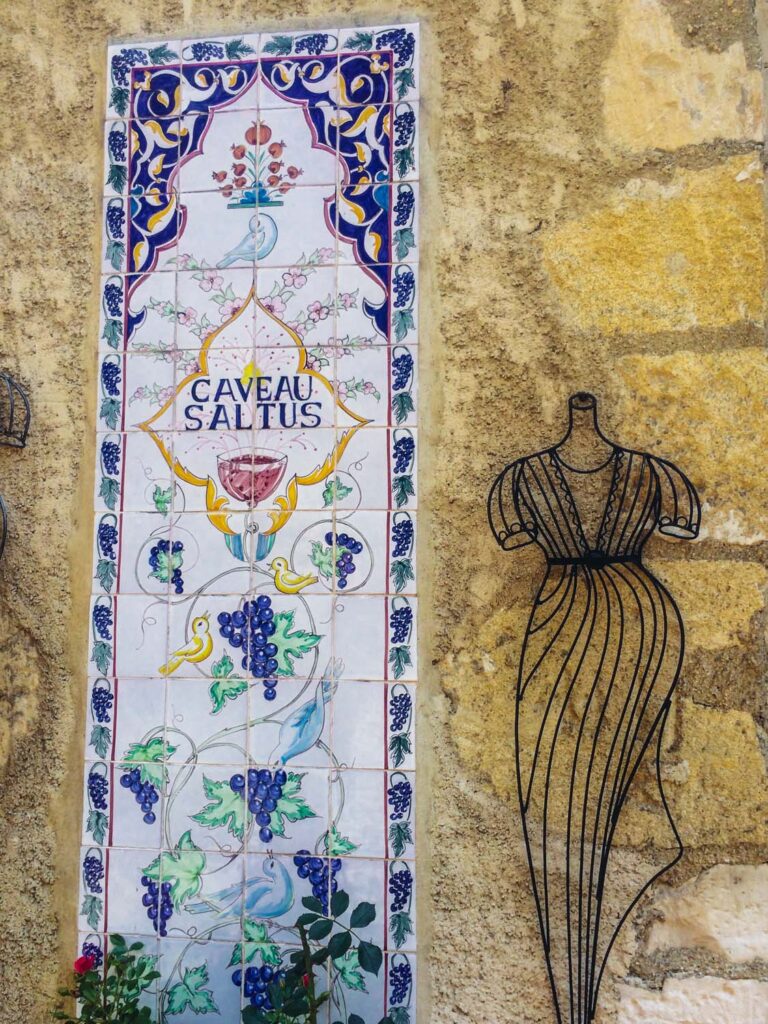
Sault Lavender Festival
Sault is known as the lavender capital of Provence! As such, it is home to its annual Lavender Festival, held on August 15th, which is a highlight of the town’s calendar. But all throughout the year, locals and tourists come together to celebrate the lavender harvest. There are so many shops here where you can find pretty much any kind of lavender souvenir you’re looking for. There is no doubt about it; this is perhaps not just the lavender capital of Provence but the entire world!
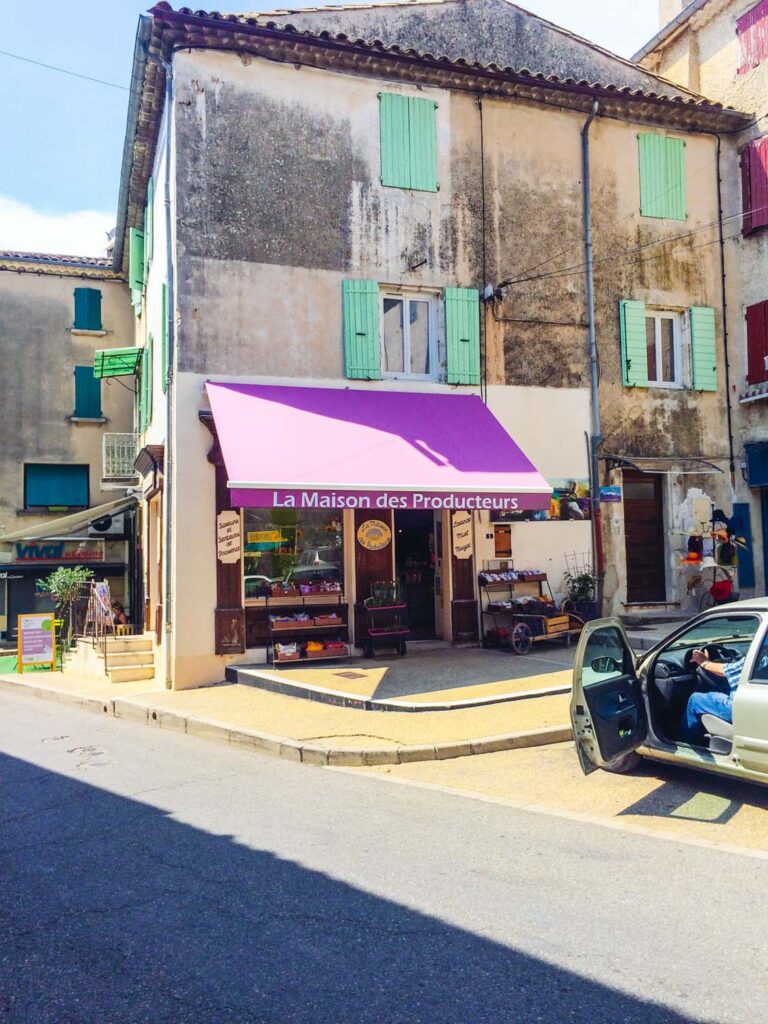
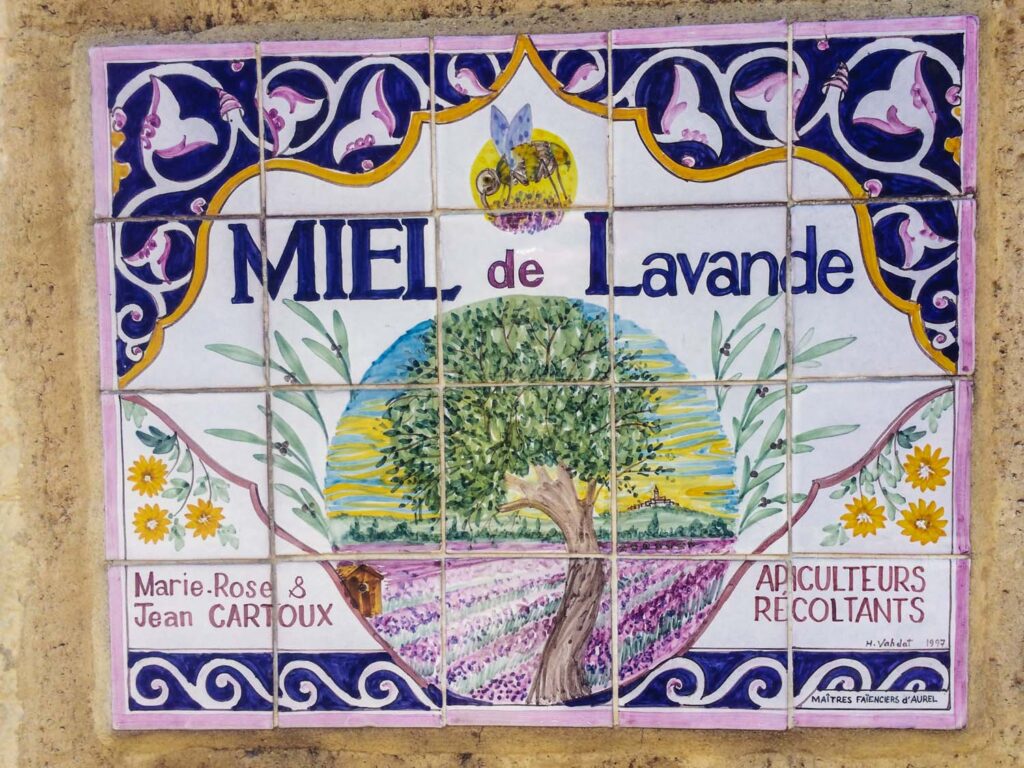
Nougat André Boyer
One shop in the centre of town that doesn’t specialize in lavender which is still worth your time, is the Nougatier André Boyer. André Boyer is a renowned confectionery brand specializing in producing high-quality nougat since 1887! Nougat has a long history in Provence, dating back several centuries. The region’s geographical location and historical connections with the Mediterranean and the Middle East resulted in the introduction of nougat to Provence hundreds of years ago. And the sweet treat became a beloved part of Provencal cuisine.
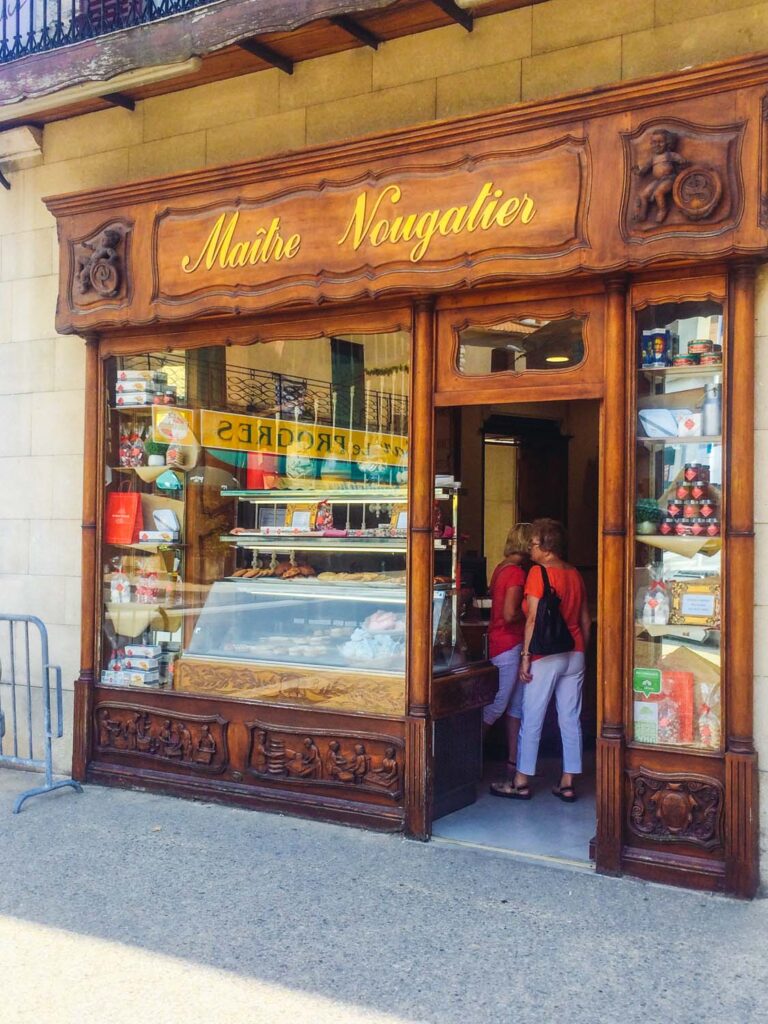
Provence’s sunny climate provides ideal conditions for cultivating almonds, a key ingredient in traditional nougat recipes. And honey, another crucial component, is sourced from the fragrant Provençal flowers, resulting in unique flavours and aromas. You can find all kinds of nougat here that use Provencal aromas like orange blossom, rosewater, and lavender to create a uniquely Provencal twist on the sweet. My favourite is their Black Nougat. This version is delicately caramelized and made with roasted almonds and lavender honey.
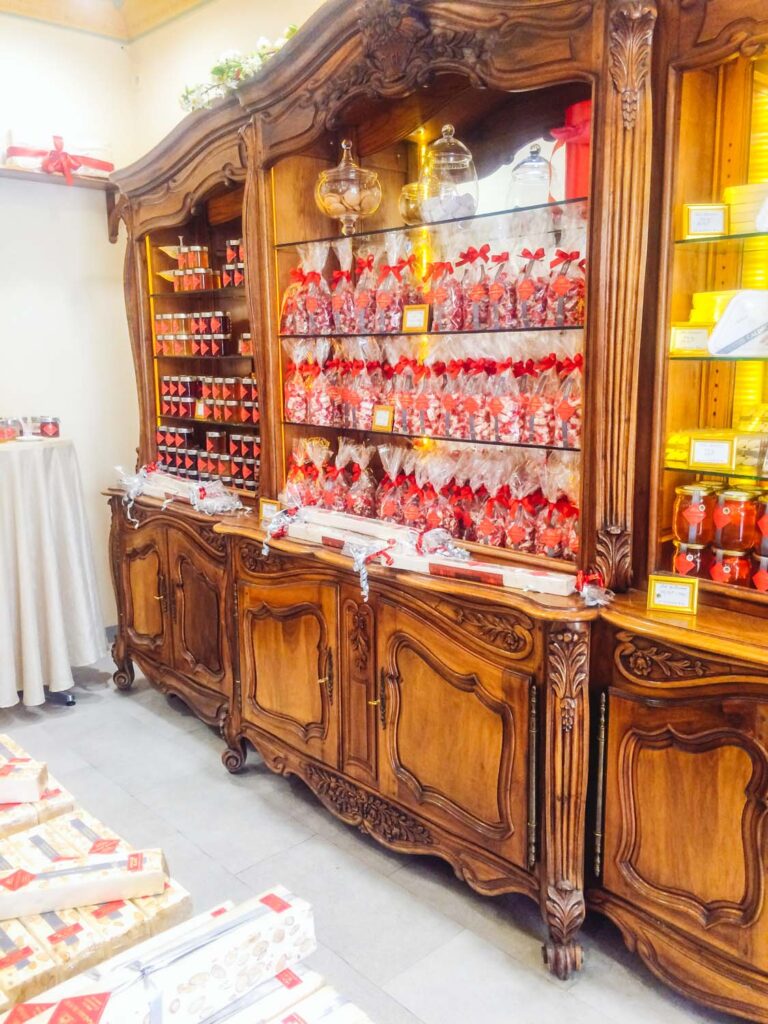
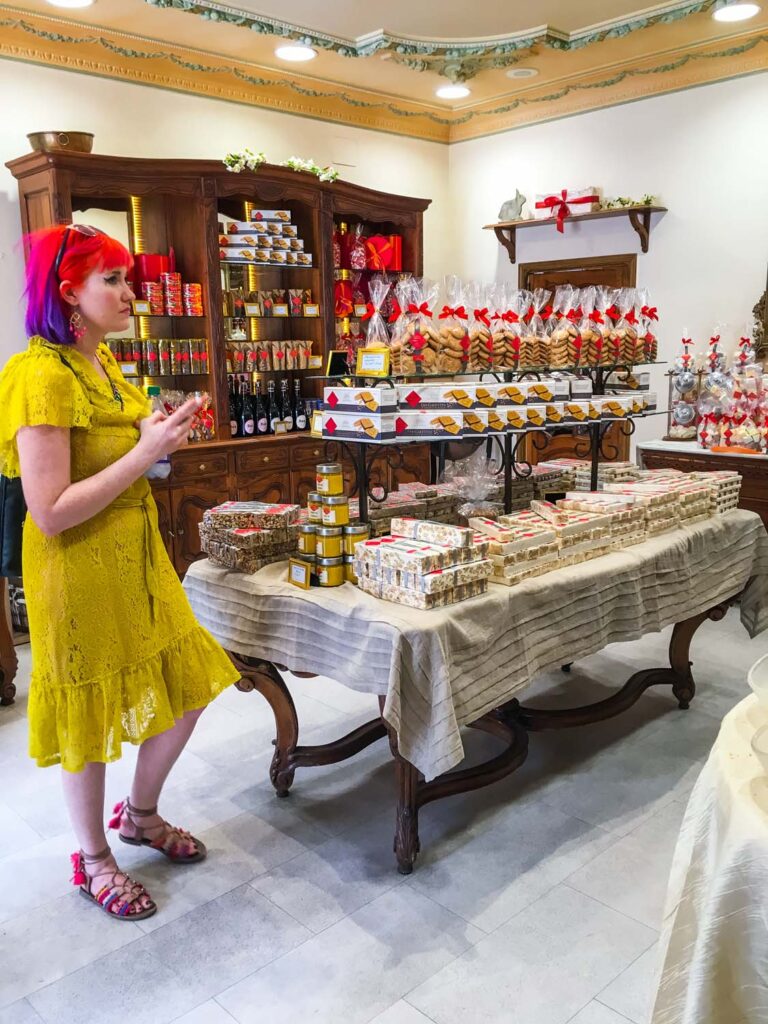
La Ferme aux Lavandes
After wandering the charming street of Sault, head back out along the D164. Go north for about five minutes towards La Ferme aux Lavandes. This family-run lavender farm is actually considered a floral park and botanical conservatory spread out over five hectares! This is a great place to visit with kids, as they can run around to their heart’s content. And even meet some Angora dwarf rabbits and cats that roam freely around the farm in summer.
Their little farm shops sell various lavender goods, including lavender-flavoured jams, biscuits and teas, which are unique to this spot! As well as the other traditional lavender product you’d expect, like essential oils, sachets, potpourri and cosmetics. They have a beautiful picnic area with deck chairs and hammocks in the orchards, inviting guests to relax amongst the lavender. If you prefer a picnic lunch, this is the perfect spot to come! Inside their shop is a cafe where you can get a cold drink, ice cream or cup of coffee to pair with your al fresco-packed lunch.
In addition to the lavender, there are roses, fruit trees, and other rare plants native to Provence that rub shoulders with the lavender in the fields and gardens.
Le Chemin des Lavandes
Loop back to the D942, where you can find Le Chemin des Lavandes or Lavender Path. This short 5 km path takes around an hour and a half to complete. But you can easily make it as short as you want. Many people simply walk out for 15 mins and then return, especially on hot days. But stepping out of your car, outside of the villages, and into the fields allows you to explore the peaceful atmosphere of the Provencal countryside.
The pathways are mostly paved, so it is a walk that almost everyone can do. But remember, there is no shade, so put on your sunscreen and wear a hat! As you make your way up through the fields, you are overwhelmed by the smell of lavender filling the air! Along the way, you’ll see farmers harvesting crops, sheep out to graze, and butterflies and bees feeding off delicious lavender nectar! Such a wonderful little walk to explore the natural beauty that the Pays de Sault has to offer.
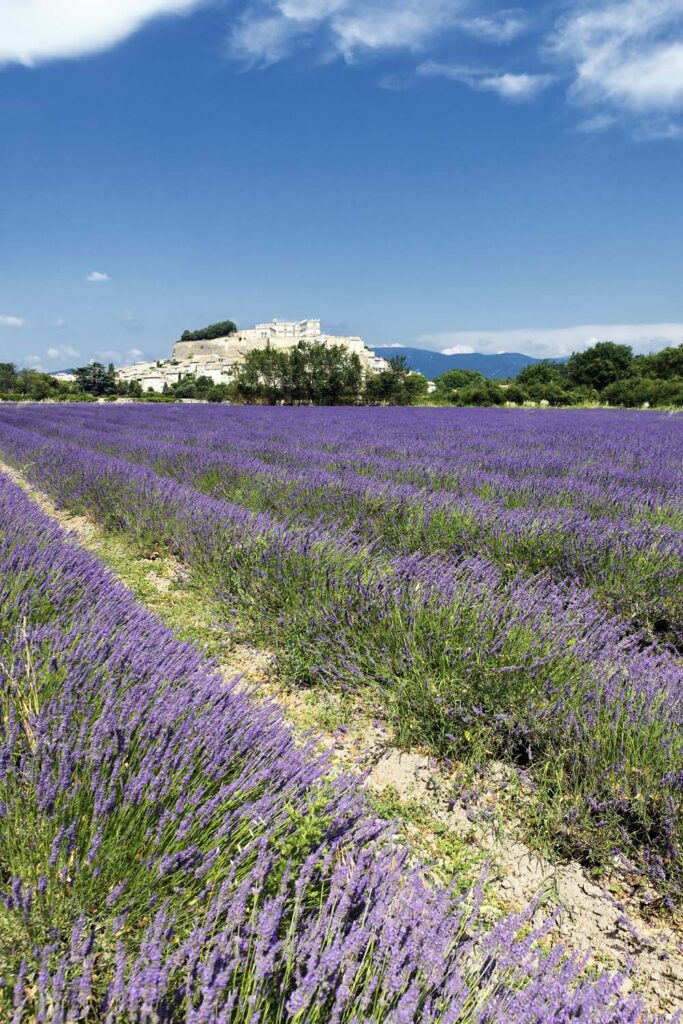
Aurel
After your walk, jump back in the car and head north along D942 for 3 km to the town of Aurel. Aurel has been named one of the “Most Beautiful Villages of France,” an official designation aimed to highlight the most exceptional places in France. It was also nicknamed the village of painters, as it inspired artworks from famous Provençal artists René Seyssaud and Pierre Ambrogiani.
Aurel streets are a wash with well-preserved medieval buildings. As you wander through the village, you’ll come across the Romanesque Church of Saint-Aurel, an architectural gem that dates back to the 12th century. The church features a bell tower with varnished tiles that still glimmer in the sunlight after all these years. A unique feature for churches in Provence and a glimpse into Aurel’s religious and artistic heritage.
Le Plus Beau Champs de Lavande
Driving away from Aurel, you are met with the most beautiful lavender fields. Marked on the map are the “Le Plus Beau Champs De Lavande” or “the most beautiful lavender fields.” This is the spot where you can take that iconic picture of the lavender fields below the city of Aurel. Spread out like a blanket under the shadow of this fortified medieval town.

Ferrassières Bories Lavender Fields
From here, head onto the D63 towards Ferrassières. The D63 is a phenomenal route for lavender viewing, with fields just one after the other. Make a slight turn west along D189, passing through Ferrassières, to the Bories Lavender field. Bories are ancient Provencal stone huts. They are considered some of the most traditional agricultural dwellings. Bories were primarily built as shelters for shepherds; some can date back centuries!
The stones are carefully stacked and interlocked to create sturdy and weather-resistant structures. The circular shape of the huts, along with their low, domed roofs, helped to ensure stability and protection from the elements. Hence why so many old ones remain standing today. The bories found here are set deep into the lavender fields. Creating the most stunning setting for a photo. The white of the stones contrasts with the bright purple fields of lavender. Add to this the almost neon blue skies, and you’ve got a recipe for an awe-inspiring photo!
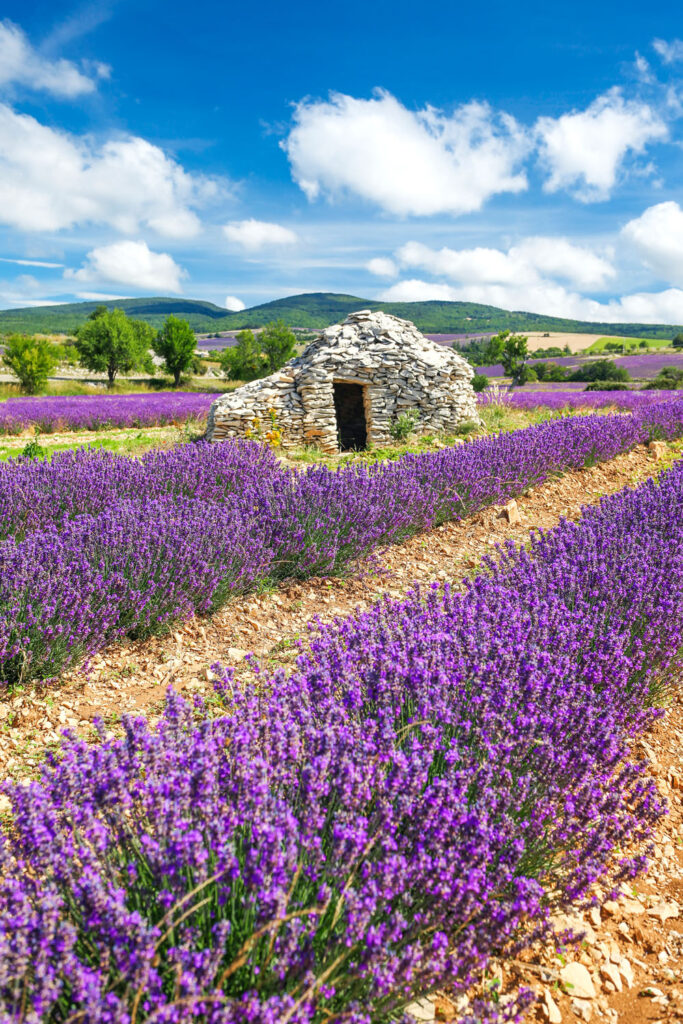
Saint Trinit
Head back through Ferrassières along the D189, which turns into the D157 towards the small town of Saint-Trinit. Saint Trinit sits at the crossroads of the Vaucluse, the Drôme and the Alpes-de-Haute-Provence. The little village was formed around the Benedictine Abbey of St. Andre in the 11th century. And its most important structure is the incredible 11th-century Romanesque church which still stands in the centre of town.
Many of the houses in the village are still made of the original stones found in the region, making it looks like a place from a bygone era. The village is surrounded by lavender and wheat fields, all under the watchful eye of Mont Ventoux.
Bistrot de Pays
If it’s open, the Bistrot de Pays is a wonderful place to grab dinner. The owner of this restaurant worked for 20 years in a four-star establishment in Avignon. But after putting in his time, he decided to move out to the country to open his own restaurant.
At the Bistrot de Pays, you are served exceptional cuisine, all made with all local products. The restaurant is the hub of the community, and you’ll feel like you’re dining with family! Sitting out on the shaded terrace, there is no better place to absorb the true Provencal ambiance. Reflecting on the wonderful day you’ve had exploring the countryside with a glass of wine and a plate of good food. Be sure to call or email in advance to ask for their hours and make a reservation. So you don’t arrive disappointed.
I hope you enjoyed your drive along the Lavender Route in the Pays de Sault! This is the most peaceful and least popular of the Provencal Lavender Routes, but well worth checking out if you’re visiting Provence late in the summer. Let me know in the comments if you have any questions or where your favourite spot in Provence has been to view these stunning lavender landscapes.
Happy Travels, Adventurers
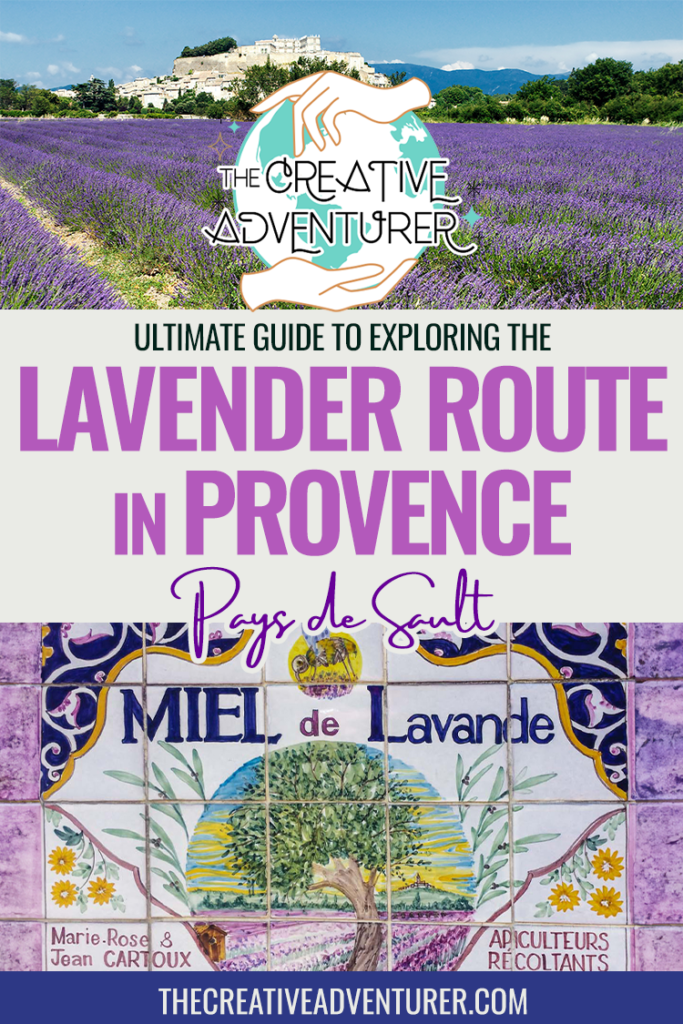

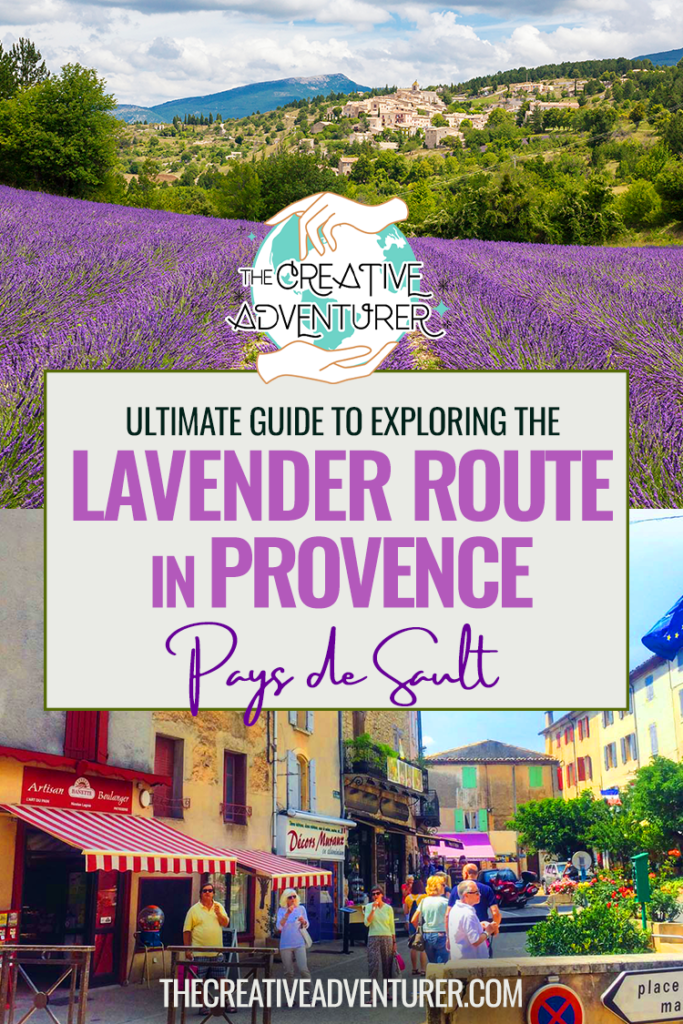
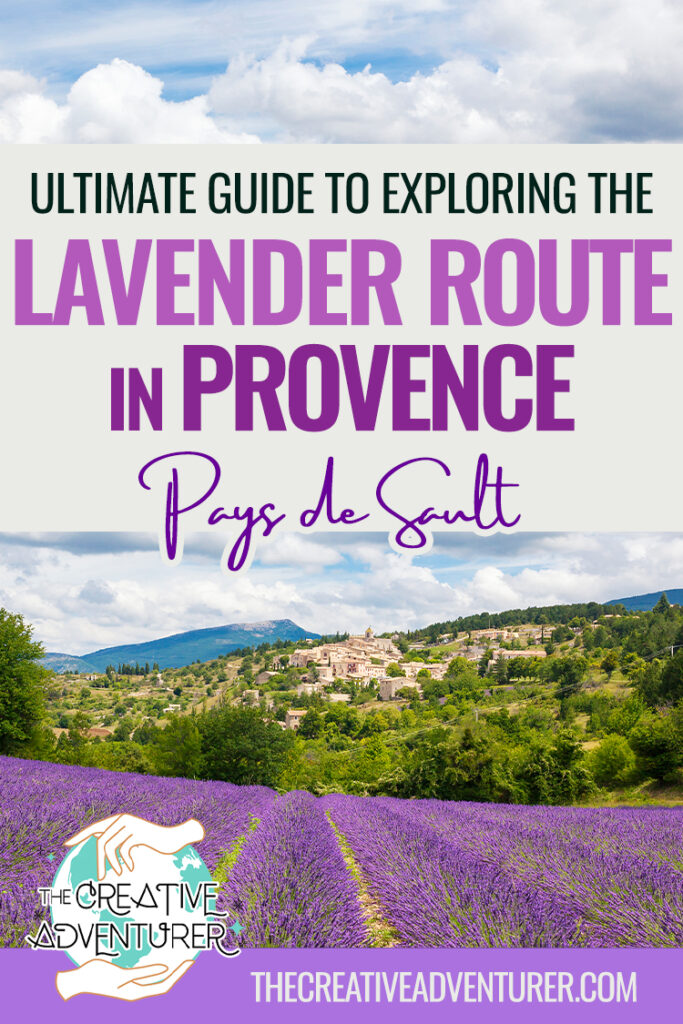
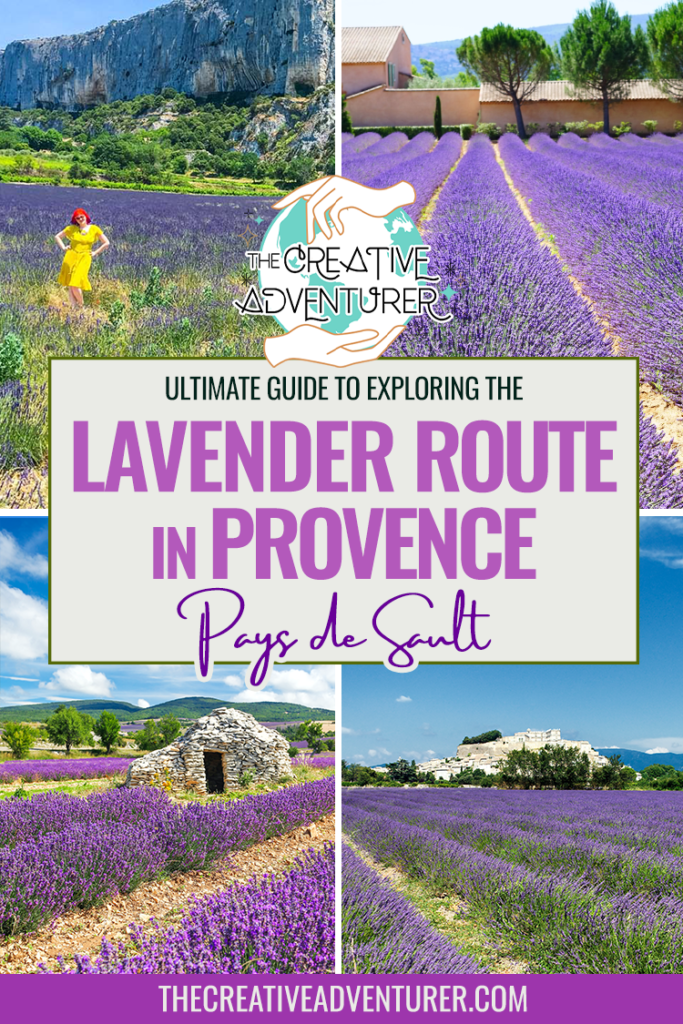
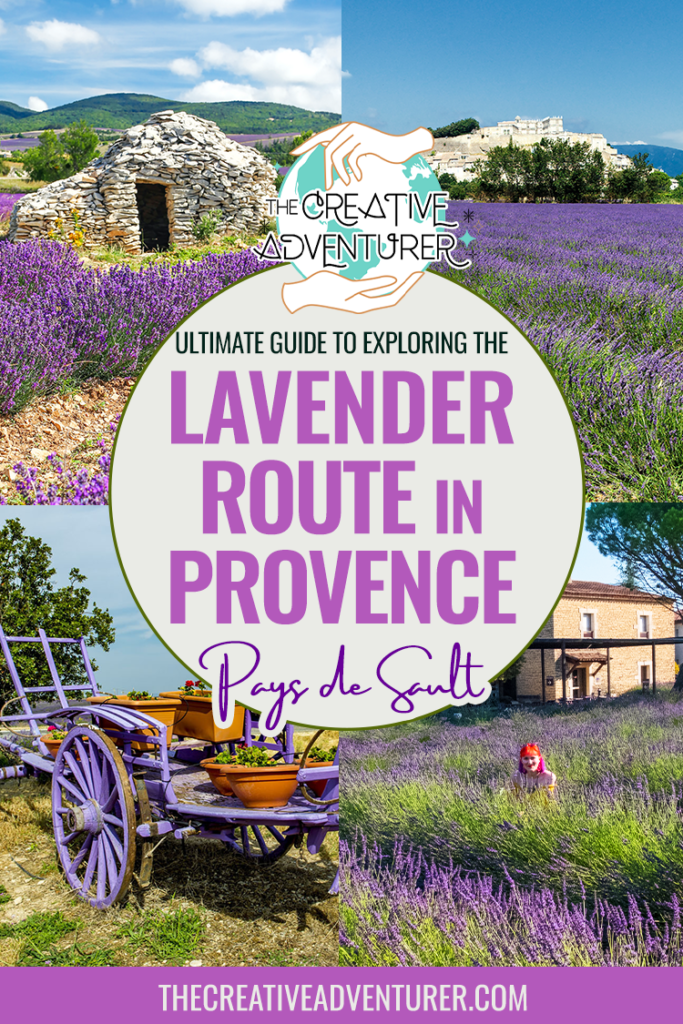


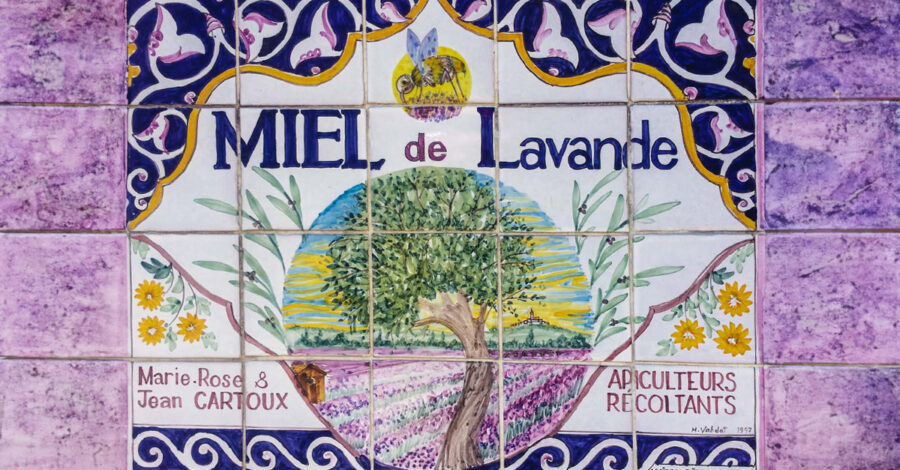
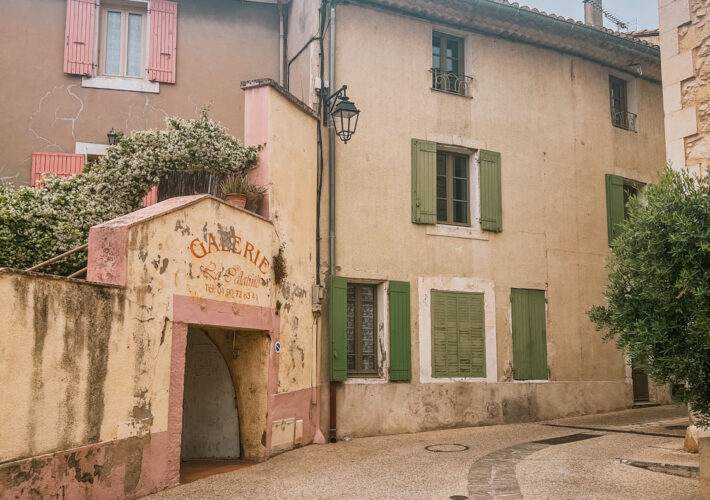

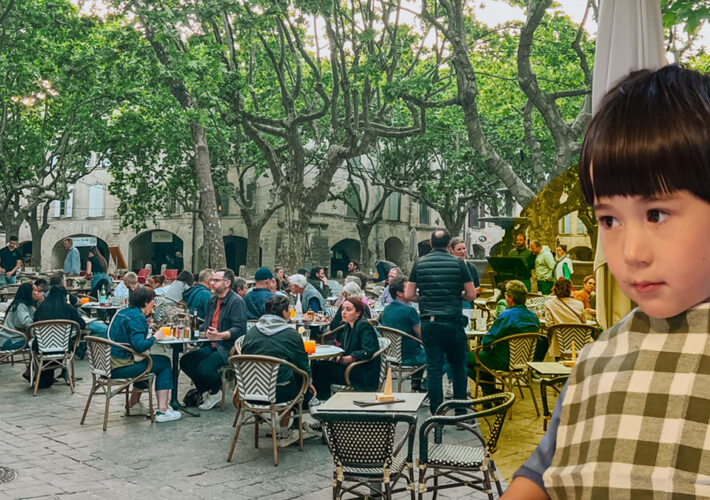

Leave a Comment